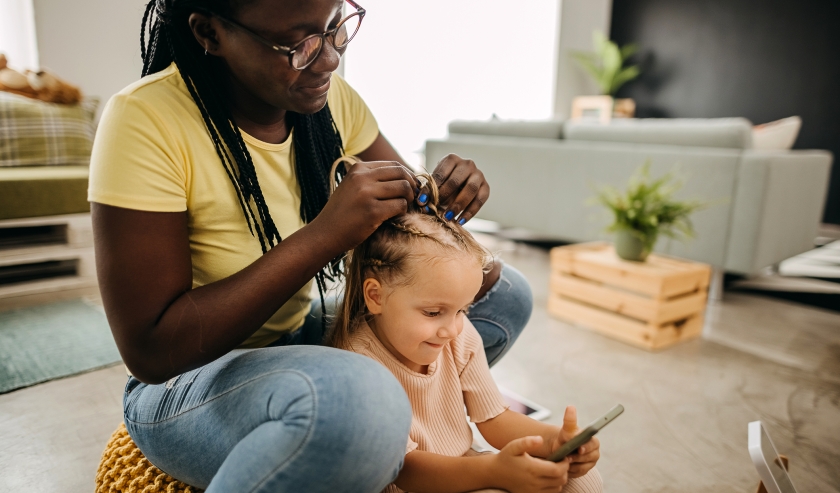Senior Advisor Dr Eleanor Ott recently reflected on the results of CEI’s systematic review for What Works for Children's Social Care on ‘matching’ and ‘co-creating’ processes when connecting children with foster families, tying the research findings to her own experience as a foster carer.
This piece was originally published in Children & Young People Now, on 1 February 2022.
Matching in Foster Care and how we can improve it
The process of “matching” children and young people in care to their foster carers is a pivotal moment in the care journey; a good “match” decision, process of sharing information, and process of moving into the household can help a child feel safe, loved, and happy. In the UK, the majority of children in care live in fostering households and are affected by matching.
-
Report: Matching Foster Care Systemic Review
-
Published by: Centre for Evidence and Implementation (August 2021)
As a social science researcher, I’ve been particularly interested in matching in foster care since becoming a foster carer seven years ago. One of our first matches perhaps appeared an odd one on paper: a white, same-sex couple with a Muslim child of colour. Yet, there was a dearth of carers to match on faith or ethnicity in the geographical area needed, and we had experiences and strong communities of Muslim friends and BAME (black, Asian and minority ethnic) friends who were able to support our foster daughter with her faith and identity, until she could return to her birth family.
In welcoming her, we found that our identities or skills could not be easily reduced to categories, and there was information that we wish we had known to better welcome her. I often wondered: were there things that we or others should consider in the decision on making a match or in helping to welcome a child? What is the impact of different matching decisions and decision-making processes? What do social workers, foster carers, and children and young people say are important for matching in foster care?
I was delighted when the Centre for Evidence and Implementation, funded by What Works for Children’s Social Care, was able to undertake a systematic review on matching in foster care, to examine the evidence around matching in foster care.
We looked at two questions:
-
What do children and young people, foster carers, and social care practitioners view as important for matching in foster care (to non-connected carers and kinship/connected carers) in the UK?
-
What is the evidence from high-income countries on how matching decisions (such as based on foster carer skill level) can be attributed to changing outcomes?
We screened 7,006 titles and abstracts from 11 databases and screened 1,140 records on websites and “grey” literature. We examined the full texts for 237 publications and included 23 studies from 24 publications.
Key findings
We found evidence that matches were often constrained by time and resources. This meant that children were often matched with whichever foster carer was available, rather than the carer who might be the best fit for them. Both foster carers and children and young people thought it was important to have information shared before arrival.
Children and young people wanted to be involved in the match decision-making process, and foster carers and social workers agreed that this aligned with child-centred practice. The location of the foster home and living with siblings were considered important factors. Race, ethnicity, culture, religion, and language were also thought to be important, however social workers sometimes prioritised matching by ethnicity and culture without considering what was important to the child or the multiple and intersecting identities of the child.
Children and young people valued shared qualities and experiences with their foster carers but living in a household that respected and supported their identity was also important.
The moment of arrival into a foster home was important for children and young people, especially for asylum-seekers who had often had long journeys and needed food and sleep. Foster carers’ reassurance and warmth helped children to feel welcomed.
There was not enough evidence for strong conclusions about the impact and attribution of different matching practices.
Implications for practice
-
Social workers should involve children and young people in discussion of what parts of their identity, needs and wishes are the most important and consider these as appropriate, while understanding social workers’ positions of power.
-
Social care professionals’ decision-making for matching in foster care should involve foster carers as well as the children in fostering households and birth family where appropriate.
-
Social workers and foster carers should consider multiple, intersecting and shifting identities of children and young people, and the ways in which those create overlapping and interdependent systems of discrimination or disadvantage.
-
Where possible and appropriate, sharing information and being able to meet foster carers and visit the foster home before the move may help children and young people to feel less anxious and help foster carers to prepare.
-
Matching should be considered beyond the decision-making and moving process to welcoming a child into a home and “co-creating” a family with them.
The findings led me to greater reflexivity as a foster carer as we welcomed an unaccompanied asylum-seeking young person in 2021. Our daughter made a sign in their language, and strove to “co-create” our household and adapt our food and routines. Hopefully, the review will lead to improving practice and research on matching in foster care.
The research team at CEI comprised Dr Ellie Ott, Rebecca Dean, Mackenzie Martin, Georgina Mann, Dr Bianca Albers and Sangita Charkraborty.
